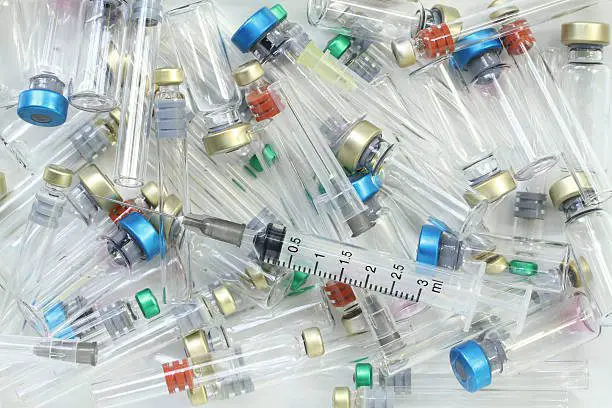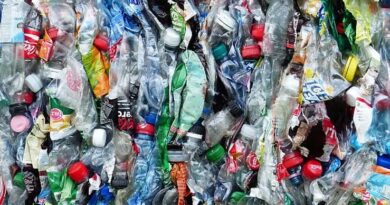The Products Derived From Biomedical Wastes
Biomedical wastes are any waste that has hazardous or possibly infectious elements in them or is contaminated with them. It consists of a broad variety of substances, including sharps (such as needles and scalpels), medical tools and supplies (such as gloves and tubing), and human or animal tissue. It is crucial to handle biological waste properly to safeguard both the environment and the general public’s health.
Regulations governing the management, storage, and disposal of biological waste are in place in many nations. This requires separating the garbage properly, marking it, and sterilizing or otherwise treating it to remove any potentially infectious pathogens.
Proper Ways to Handle Biomedical Wastes
Biomedical waste may be handled, recycled, and processed to create a wide range of new goods, such as the following:
1. Energy

Burning biomedical waste may provide heat or power. Biomedical waste processing that absorbs energy from the waste and transforms it into a useful form, such heat or power, is known as energy recovery from biomedical waste. Numerous processes, such as pyrolysis, anaerobic digestion, and combustion, may accomplish this.
Incineration is the controlled burning of garbage at high temperatures, which may produce heat and power. In anaerobic digestion, organic material is broken down by microbes without the presence of oxygen to create biogas, which may be burned as fuel.
The garbage is cooked at high temperatures without oxygen during pyrolysis, which causes it to disintegrate into its chemical components, including fuel-like gases and liquids.
Energy recovery from biomedical waste may be a useful strategy for managing the trash and reducing its environmental catastrophe, but it’s crucial to make sure the process is conducted out responsibly and safely to prevent any possible hazards to the environment and public health.
2. Fuels
Biofuels may be made from some of the organic byproducts of biomedical waste, such fats and oils. Biomedical wastes like sewage, agricultural byproducts, and food processing wastes may easily be converted into fuels like biofuels and biogas.
Anaerobic digestion is a method for creating these fuels, in which microorganisms break down organic waste in the absence of oxygen to create biogas, which is largely composed of methane and carbon dioxide.
In many different situations, such as the production of energy, heating, and transportation, biogas may be used as a fuel.
Through the process of pyrolysis, in which the organic material is cooked in the absence of oxygen to create a bio-oil that can be used again as fuel, biomedical waste may also be converted into biofuels (recycle).
It is significant to highlight that the creation of fuels from biological waste is subject to regulatory constraints in many nations since it is crucial to make sure that doing so does not provide any concerns to the environment or public health.
Read Also: Guide to Protected Areas Management
3. Compost
Biomedical waste is able to decompose and break down into compost, which is then used as a natural plant fertilizer.
Used bandages, needles, and other objects that have come into touch with bodily fluids are examples of such things. Biomedical waste must be handled and disposed of appropriately to stop the spread of illness and safeguard the environment.
Composting is one method of biological waste disposal. When organic waste, such as kitchen scraps and yard trimmings, decomposes into a nutrient-rich soil supplement, the process is known as composting.
Some biomedical waste categories, including paper and some plastics, may be composted with other organic garbage. However, certain biological waste, such needles and other sharp materials, should not be composted since doing so might endanger those managing the compost.
If you’re interested in composting biomedical waste, it’s a good idea to speak with your local government officials and follow the correct processes to make sure the garbage is handled appropriately and securely.
4. Recyclables
Several components of biomedical waste, including paper, cardboard, and certain plastics, may be recycled. Some materials that are produced as biomedical waste may sometimes be recycled.
For instance, some plastic packaging and container types used to transport or store biomedical waste may be recycled. It is crucial to keep in mind that not all biomedical waste may be recycled, and that specific processes must be followed when disposing of hazardous items.
If you have any concerns about how biological waste should be disposed of in your community, you should seek advice from your neighborhood healthcare institution or waste management organization.
They will be able to advise you about the particular rules and regulations that apply to the handling and disposal of biological waste in your region.
5. Sanitized Goods
Some single-use medical devices and other biological waste may be sterilized and repurposed. Biomedical waste is trash produced as a consequence of medical procedures.
Used needles and syringes, unused drugs, blood and bodily fluids, as well as other objects that can be contaminated with dangerous substances, might all fall under this category. It is essential to adequately sterilize these items before disposal or reuse to ensure that they do not endanger human health or the environment.
Biomedical waste may be sterilized using a variety of techniques, such as autoclaving, irradiation, and chemical disinfection. When sterilizing biomedical waste, it’s crucial to strictly adhere to specified criteria and processes to make sure it’s suitable for disposal or reuse.
6. Landfill cover
Biomedical waste may sometimes be utilized as a material to cover landfills to lessen smells and deter pests. The material used to cover and seal a landfill is referred to as landfill cover. Solid waste is disposed of via landfills, and the cover material reduces the space available for smells and bugs while preventing the discharge of toxic compounds into the environment.
Soil, clay, and synthetic materials are just a few of the several kinds of materials that may be utilized as landfill covers. When correctly handled and posing no threat to the environment or public health, biological waste may sometimes be included in the fill material for landfills.
However, alternate means of disposal, including incineration or autoclaving, are often favored, and this isn’t even the main use for biomedical waste. It is crucial to remember that the processing and disposal of biomedical waste are regulated to guarantee that it’s done safely and sustainably.
Read Also: Aneuploidy, Types, Causes and Aneuploid Series


